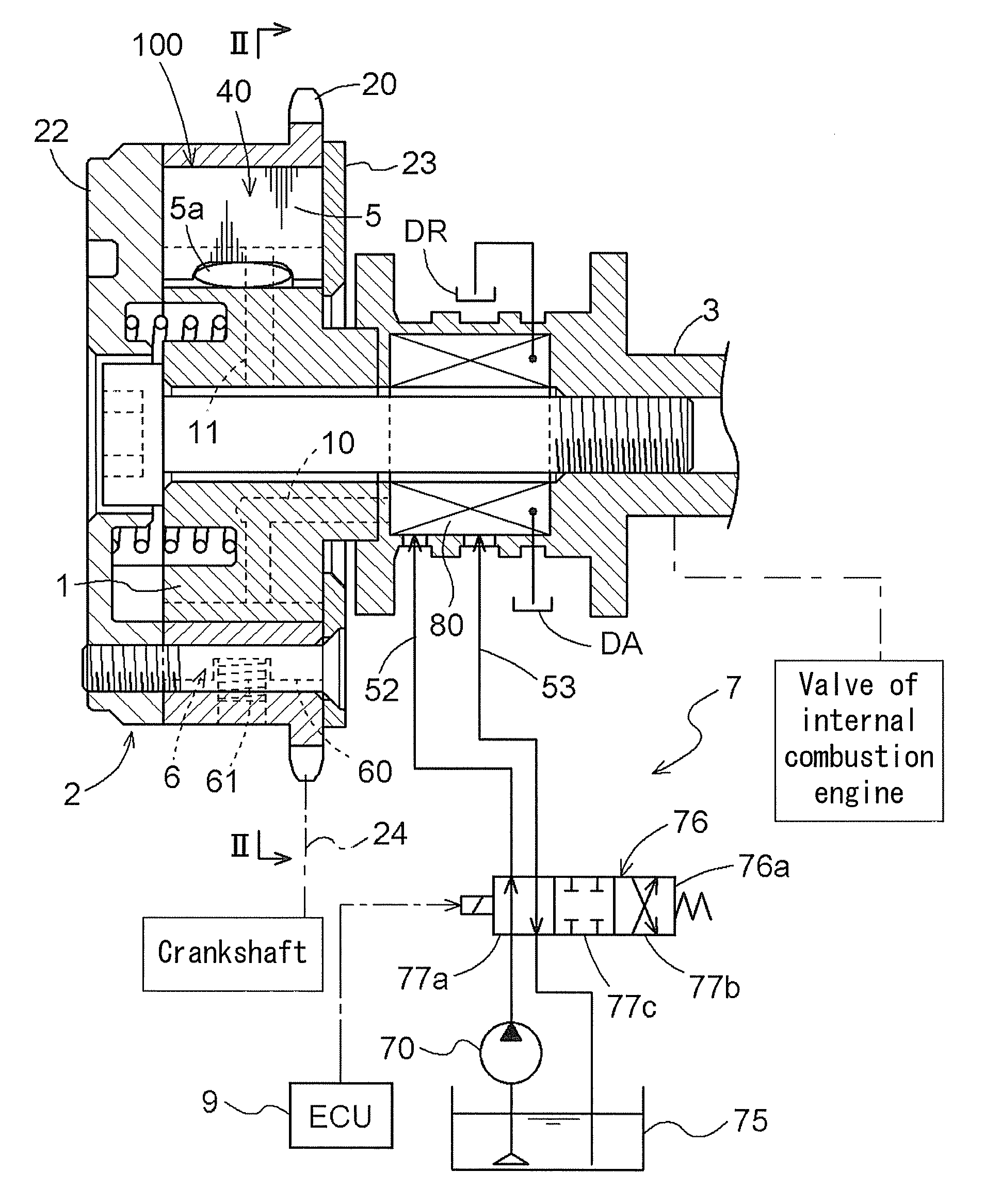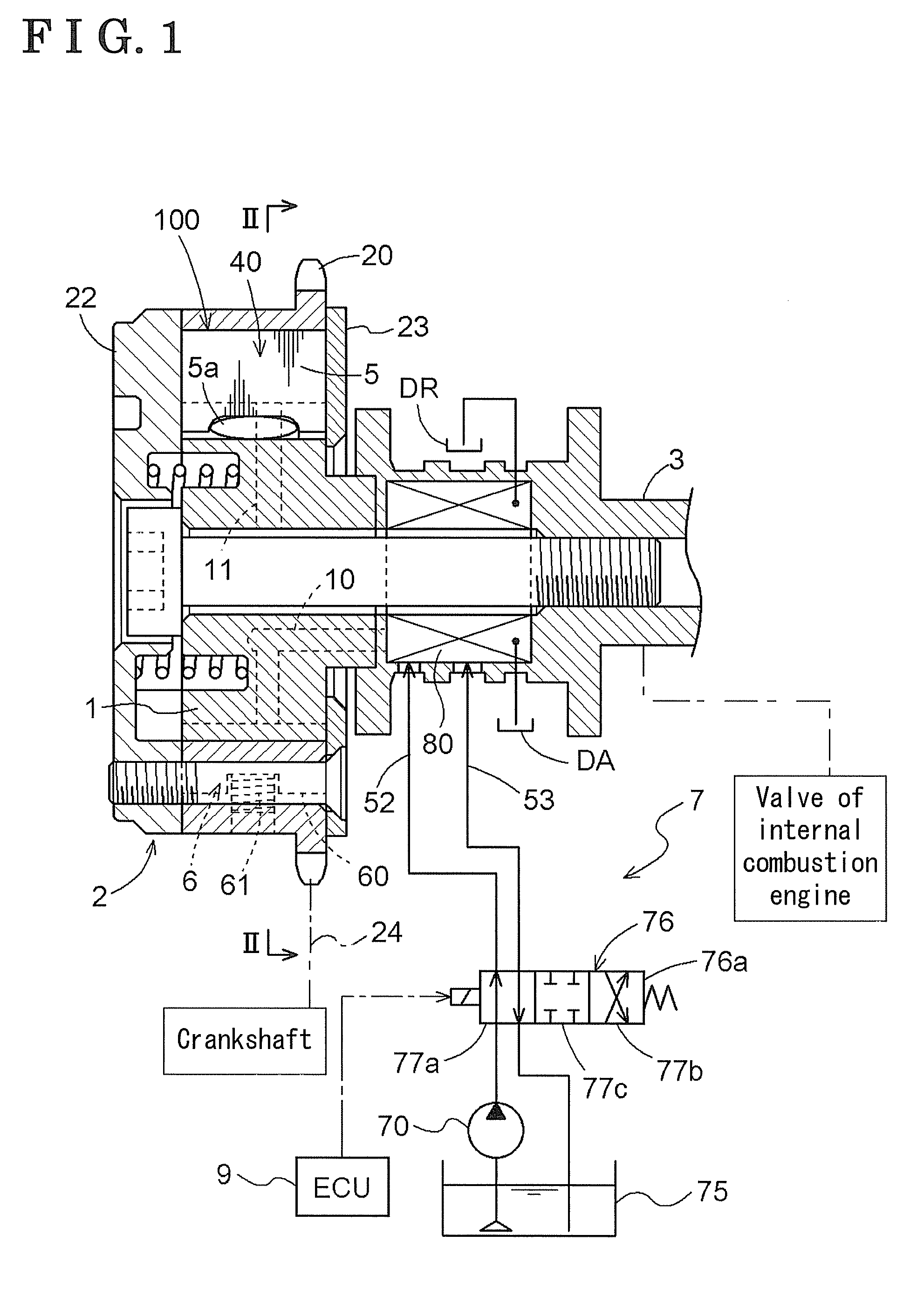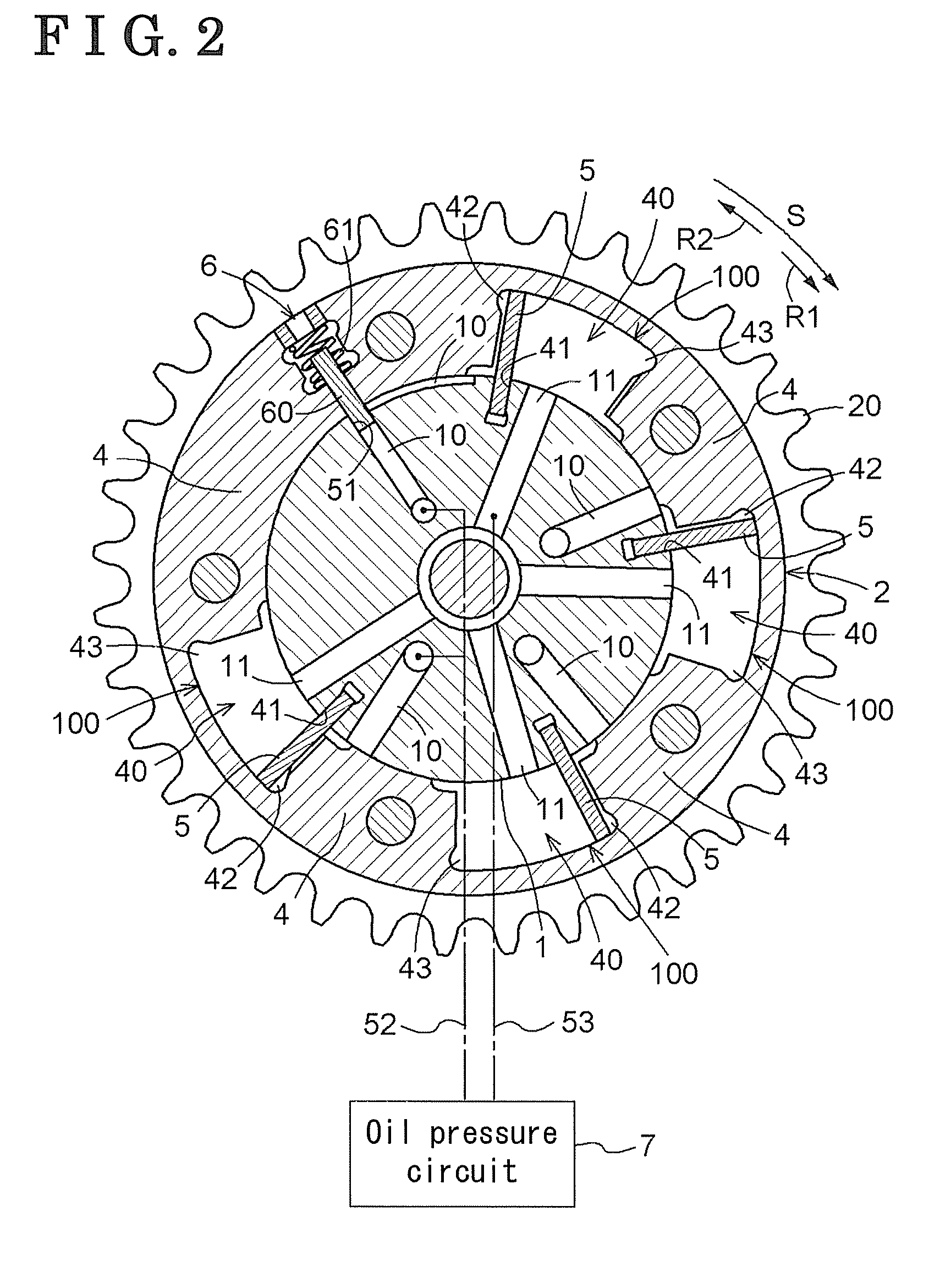Valve timing control apparatus
- Summary
- Abstract
- Description
- Claims
- Application Information
AI Technical Summary
Benefits of technology
Problems solved by technology
Method used
Image
Examples
Embodiment Construction
[0016]As shown in FIG. 1, a valve timing control apparatus according to a first embodiment of the invention includes an actuator 100 which is constructed by an external rotor 2 serving as a driving rotation member and an internal rotor 1 serving as a driven rotation member. The external rotor 2 synchronously rotates with a crankshaft of a vehicle engine, and the internal rotor 1 is coaxially arranged with the external rotor 2 and integrally rotates with a camshaft 3. The relative rotation phase between the external rotor 2 and the internal rotor 1 is variably controlled. FIG. 2 is a sectional view taken along a line II-II of FIG. 1.
[0017]The internal rotor 1 is integrally assembled to a distal end of the camshaft 3 which is supported so as to integrally rotate with a cylinder head of the engine. The external rotor 2 sheathes the internal rotor 1 so as to relatively rotate with the internal rotor 1 in a predetermined relative rotation phase range. The external rotor 2 includes a fron...
PUM
 Login to View More
Login to View More Abstract
Description
Claims
Application Information
 Login to View More
Login to View More - R&D
- Intellectual Property
- Life Sciences
- Materials
- Tech Scout
- Unparalleled Data Quality
- Higher Quality Content
- 60% Fewer Hallucinations
Browse by: Latest US Patents, China's latest patents, Technical Efficacy Thesaurus, Application Domain, Technology Topic, Popular Technical Reports.
© 2025 PatSnap. All rights reserved.Legal|Privacy policy|Modern Slavery Act Transparency Statement|Sitemap|About US| Contact US: help@patsnap.com



